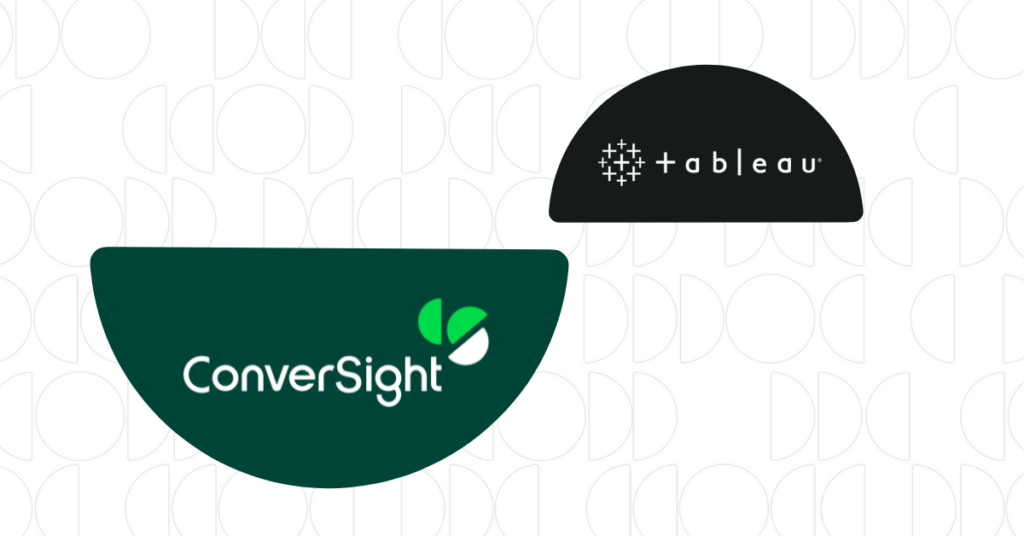ConverSight vs. Tableau
With generative AI making buzzing among business leaders and consumers alike, businesses are left wondering how they can apply such robust solutions to go to work for them and their employees. Whether it’s evaluating new products on the market or legacy tools creating new features and capabilities of their own, their are countless factors to consider. In fact, Gartner reports 70% of organizations are currently in exploration mode with generative AI. Are you one of them? This article will explore the differences between ConverSight and Tableau, their generative AI and BI capabilities, as well as their value in generating desired insights.
Generating proactive insights that kickstart your business
Natural language processing is the most intimate way that users can parse and access insights from their data. Combined with generative AI, business users can access their data and generative proactive insights like never before. Whether it is through forecasting for supply chains, marketing analytics, or sales data, users of all levels can parse data and get actionable data to make decisions.
New GPT capabilities further personalize the user’s data experience, usually at half the cost of other technologies. Below are some of the key differentiators when it comes to ConverSight and Tableau capabilities:
Key Differentiators:
- GPT Features: With generative AI and natural language processes at its core, ConverSight delivers the depth of a robust business intelligence solution with specialized data storytelling and intelligent story generation to provide the full picture on user data; advanced querying abilities, and timelines to assess data over time. This opens the data accessibility floodgates to users of all roles and departments. Tableau does not offer generative AI capabilities natively, but rather through its integration with Salesforce which enables access to Einstein Discovery, which provides users with predictions and recommendations based on the data they’re working with.
- Connecting to disparate data sources: Tableau users cite the long wait time and often unbalanced nature of connecting between disparate data sources; ConverSight users can instantly access their data from whichever data source they are accessing, and gain insights instantly and proactively.
- Natural language query: Tableau’s platform features limited Natural Language Query capabilities; with ConverSight’s Athena, users hold one-to-one interactions with their data by asking simple (and complex) questions. Athena goes a step further to suggest additional insights to explore related insights, recommend next steps and automate time-consuming actions.
Tableau:
Founded in 2003, Tableau is an interactive data visualization software that gives users the ability to connect to their data sources and produce visualizations of their data . Tableau enables businesses to:
- Integrate multiple, disparate data sources into one platform
- Parse their data with AI and machine learning.
- Automated ML to bring advanced learning to new data sets and trends
- Advanced Security and data privacy to protect user data
While Tableau is known as one of the most common BI and data visualization tools, users often cite difficulties with connecting to disparate data sources, as well as a lack of generative AI capabilities and natural language processing tools that make it difficult to fully visualize their data in the platform.
ConverSight
Recognizing the challenges many businesses were facing with data ingestion, analytics and decision making, ConverSight was built to humanize the interaction users have with data through the power of augmented analytics, data storytelling and generative AI. With the help of its AI assistant, Athena, ConverSight users gain access to endless insights in a manageable, digestible interface that prioritizes the user.
ConverSight GPT: Athena has the ability to create data stories, producing timelines and narratives that provide the full picture on the story the data is telling. Natural language querying provides the most in-depth way for business users to access and get insights into their data, all in a simple 1:1 interaction with AI.
- Get timelines and explanations around your queries, as AI makes sense of your data and provides a data story. Uncover valuable insights with AI that you would not detect otherwise.
- Gain advanced querying abilities, and drill down into your data like never before with ConverSight’s unique LLM modeling.
- Automate your performance tracking and monitoring with AI.
- Enhanced data security means your proprietary information is safe within the platform.
Easy Data Connection: ConverSight has over 130 integrations, making it easier than ever for businesses to connect their disparate data systems and get insights.
End-to-end visibility: With control towers, AI platforms create a 360-degree view of data, allowing businesses to view their data from every angle. Control towers lead businesses toward transparency and better coordination, which allows businesses to stay on top of demand which leads to lower costs and higher efficiency.
AI Workbench: Build and scale your own unique models across an open source platform. Utilize Jupyter notebook and AI/ML frameworks to build models that work for your company specifically. Publish your framework in the marketplace to increase reusability across your entire organization.
ConverSight puts the user first to dill down into the metrics that matter most at half the cost. Engage AI in a 1:1 to ask questions about your data, and get the full picture around the answer, the how, why and what to do next. With ConverSight, businesses are able to democratize data across the organization, while maintaining data security on a user and row level for data-driven decision making.
Request a demo today to see the real difference between Tableau and ConverSight.

